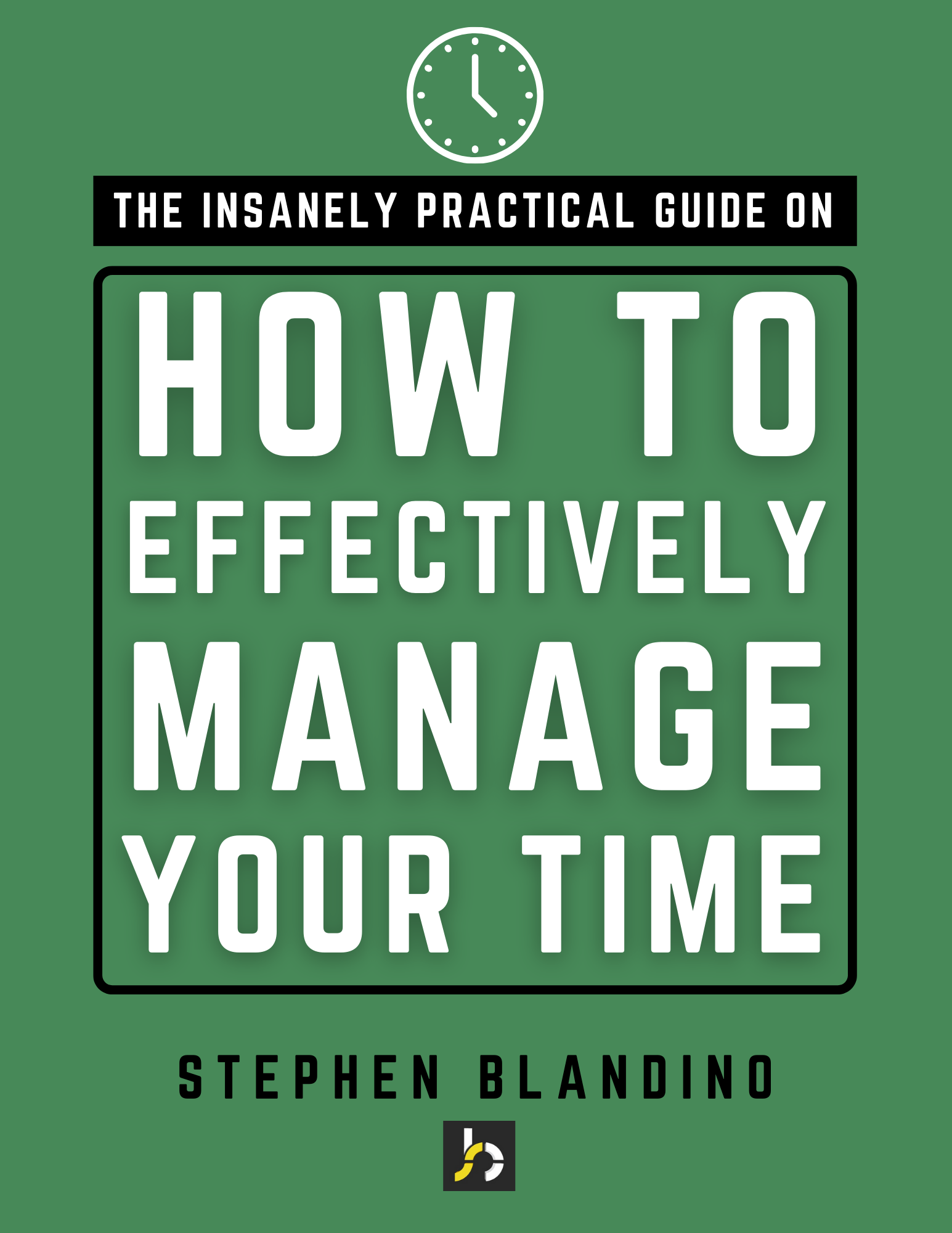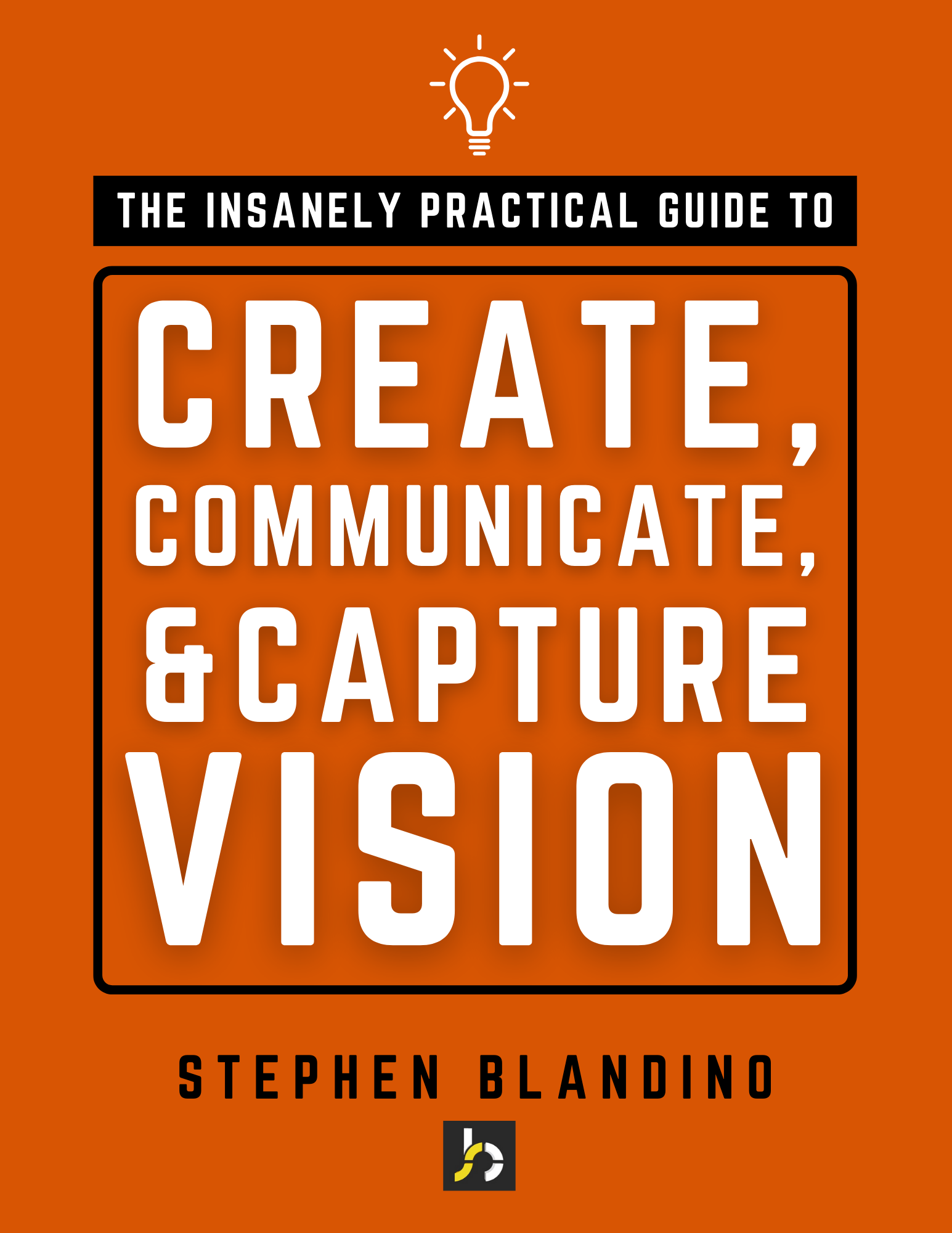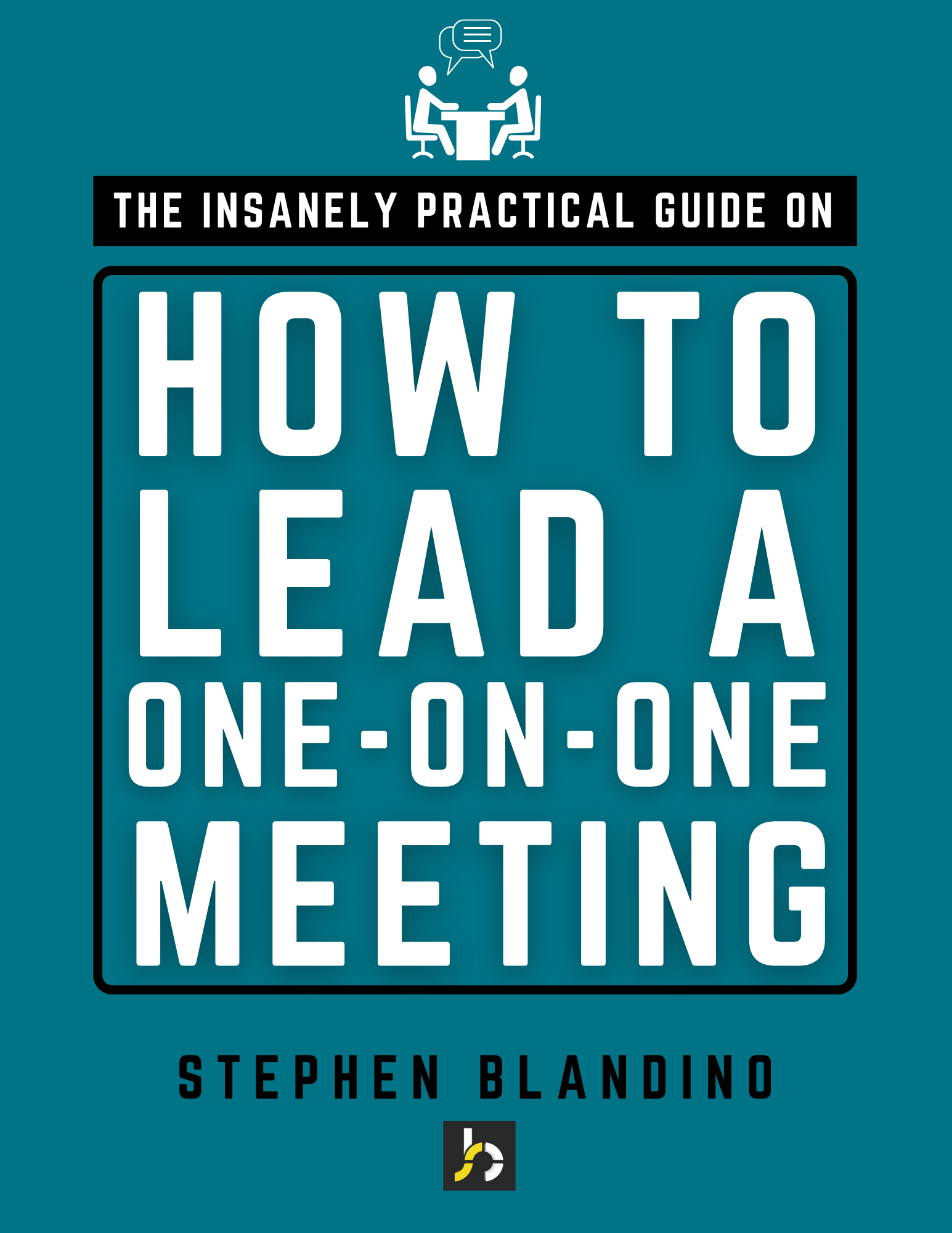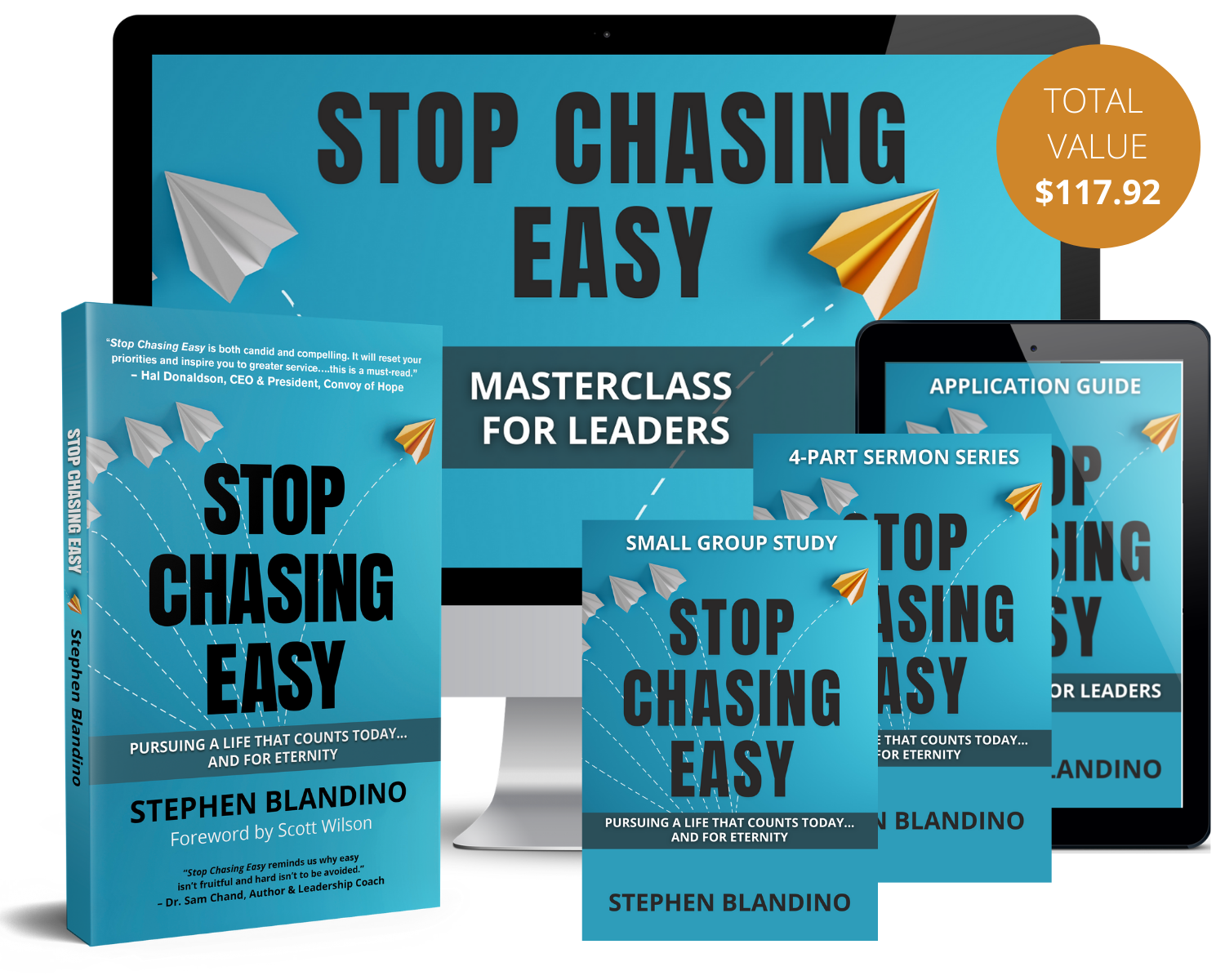Leadership comes with a host of challenges, uphill struggles, and negative voices that tell us why we can’t do what we want to do. But, despite the circumstances, leaders lead. They don’t let the struggles they face, the disaapointments they encounter, or the naysayers around them cloud their commitment to move forward. Instead, leaders have “Can-Do” attitudes.
Can-Do Leadership is about more than having a strong work ethic; it’s also about your perspective, mindset, tenacity, and posture toward being solution-focused. The best Can-Do leaders share eight qualities that keep them from getting stuck.
1. Positivity – I choose an optimistic outlook
In their book, Spiritual Leadership, Richard and Henry Blackaby observe the importance of leaders maintaining a positive and optimisit outlook. They use George Marshall as an example. They observe:
“When George Marshall became the U.S. Secretary of State, he was informed that spirits were low in the State Department. Marshall advised his staff, ‘Gentlemen, enlisted men may be entitled to morale problems, but officers are not….I expect all officers in this department to take care of their own morale. No one is taking care of my morale.’ If leaders cannot manage their own attitudes, they cannot be entrusted with the morale of others. When leaders believe anything is possiblee, their followers will come to believe that too” (p. 168-169).
If you don’t believe it can happen, nobody you lead will believe it either. Our positivity—or negativity—is contagious. As John Maxwell observes, your attitude is “the librarian of our past. It is the speaker of our present. It is the prophet of our future.”
[bctt tweet=”If you don’t believe it can happen, nobody you lead will believe it either.” username=”stephenblandino”]
2. Initiative – I don’t wait to be asked
Initiative is critical in many areas of life, but three stand out in a work environment. When we lack initiative in these three areas, we diminish our performance and team dynamics.
- Volunteering – The best team members notice needs and willingly volunteer without having to be asked. In other words, their initiative doesn’t end with their job description.
- Learning – Leaders with initiative figure things out and continually look for ways to improve what they do. Their learning posture drives them to discover best practices, keep stretching, and approach work with a “figure it out” mindset.
- Execution – Can-Do Leaders don’t procrastinate. Instead, they proactively plan, act, and over-deliver. They put feet to their goals, responsibilities, and objectives.
3. Responsibility – I own it
Can-Do Leaders own their role, responsibilities, assignments, and growth. They never cast blame or deflect responsibility. Instead of saying, “Why do we have to go through all this change?”, Can-Do Leaders ask, “How can I adapt to the changing world?” Instead of saying, “Who dropped the ball?”, they ask, “How can I contribute?” Instead of expecting somebody else to train them, they take responsibility for their own growth and development. Can-Do Leaders are owners.
4. Decisiveness – I make decisions without bogging down my supervisor
When team members step into a role, they have the responsibility to execute the responsibilities of that role without constantly bogging down their supervisor. Yes, there’s an initial training period, and yes, a leader should work hard to serve his or her team by giving them what they need to excel. At the same time, the best team members learn how to make decisions without relying on their boss for constant direction.
Recently I shared with my staff at 7 City Church eight things to consider when making a decision. The better you process these eight areas, the better you’ll be able to make decisions without bogging down your supervisor. I used the word “DECISION” as an acronym to communicate this decision-making framework:
- DNA – Does the decision authentically reflect 7 City’s vision, values, DNA, and style?
- Excellence – How will the decision be executed to reflect 7 City’s level of quality?
- Consequence – What will be the immediate and long-term outcome of this decision?
- Impact – How will the decision impact other staff, ministries, or our team’s culture?
- Stewardship – Does the decision reflect wise stewardship of our time, talent, and financial resources?
- Investigation – Is the decision adequately researched and tested?
- Ownership – Are you willing to own the decision, its execution, and its consequences?
- Noble – Is this a noble decision that reflects integrity and honor to God?
Use these eight marks to make quality decisions and exercise Can-Do Leadership. Reviewing each question prior to making a decision will increase your decision-making confidence and keep you from bogging down your supervisor with the issue.
5. Solution-Minded – I won’t quit until I find a solution
Anybody can point out a problem, but solution-minded leaders hunt down the best solutions, and don’t quit until they have solved the problem at hand. To be a solution-minded leader, embrace the three R’s:
- Resist – Resist an inflexible attitude, the mindset of a victim, and the temptation to make excuses.
- Research – Aggressively search for creative answers inside and outside of your network of relationships and sources of knowledge.
- Refuse – Refuse to take “no” for an answer; instead persevere to the end.
6. Mobilizer – I don’t do ministry alone
These eight qualities are characteristics of Can-Do LEADERS, not Can-Do ACHIEVERS. What’s the difference between a leader and an achiever? Achievers are doers and leaders are developers. Achievers are limited by their own time, talent, and expertise. Leaders are only limited by the time, talent, and expertise of the team they develop around them. Achievers do ministry alone. Leaders do ministry with and through others. Achievers are focused on what they can do. Leaders are focused on activating and mobilzing the Can-Do in others.
7. Resilience – I bounce back after every setback
Martin Luther, father of the Reformation, translated the New Testament into German while confined to the castle of Wartburg. Ludwig van Beethoven wrote his best masterpieces after going deaf. Thomas Edison rebuilt his invention factory after it burned to the ground—he was sixty-seven years old. In fact, as he watched it burn, he is reported to have told his kids, “Go get your mother. She’ll never see another fire like this one.”
Resilience marked each of these leaders. They learned to bounce back after every setback. Hardship is often the refiner of great leadership. Your resilience reveals the deep roots of a Can-Do attitude.
[bctt tweet=”Hardship is often the refiner of great leadership.” username=”stephenblandino”]
8. Grit – I don’t give up until the job is done
Thomas Edison once said, “Many of life’s failures are people who did not realize how close they were to success when they gave up.” Can-Do Leaders don’t give up. They have grit. Angela Lee Duckworth, author and psychologist from the University of Pennsylvania, has extensively researched the subject of grit. She observed:
“Grit is passion and perseverance for very long-term goals. Grit is having stamina. Grit is sticking with your future, day in day out, not just for the week, not just for the month, but for years, and working really hard to make that future a reality. Grit is living life like it’s a marathon, not a sprint.”
A perfect example of grit is found in a comparison of standardized math test scores between Japanese and American children. One study involving first-graders found that Japanese students were better than American students at solving a difficult puzzle. What was the major difference? Grit. American students would work an average of 9.47 minutes before giving up. Japanese students worked 47% longer—13.93 minutes. Researchers concluded that success had less to do with intelligence quotient and more to do with persistence quotient.
Which “Can-Do Leadership” quality is your greatest strength? Which is your greatest weakness? Your Can-Do commitment is essential as a leader—for you personally and for the team you lead.








